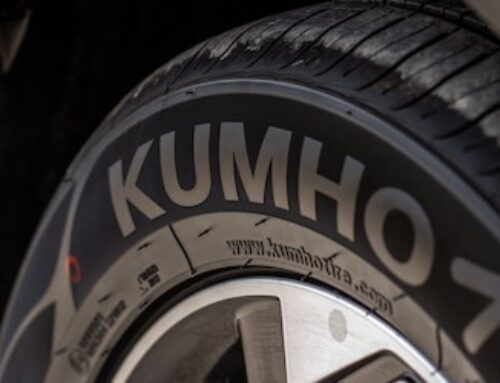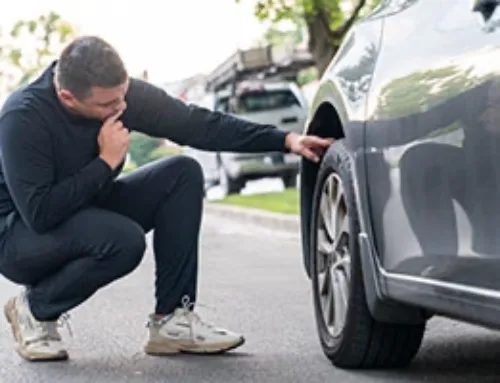Table of Contents
You’re driving around and notice that one of the lights on your dashboard is lit up. It looks like a little cauldron with an exclamation point inside. Do you see it? Congratulations, you’ve discovered the tire pressure light. Bad news? It indicates an issue with the air pressure in one or more tires.
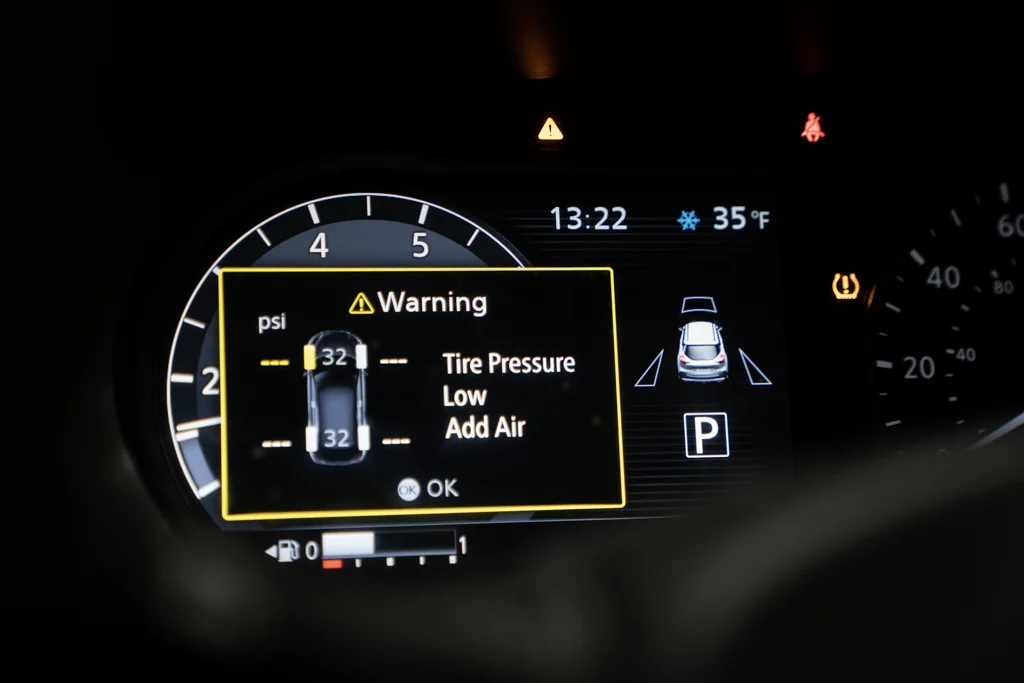
Tire Pressure Monitoring System (TPMS) basics
The tire pressure warning light comes on when your tire pressure monitoring system (TPMS) has detected an issue with the air pressure in one or more tires. This is an important safety feature that can prevent tire damage or even a blowout.
It’s very easy to maintain your vehicle’s recommended tire pressure, and you can check the owner’s manual to see what the correct pressure is. Underinflated tires can result in damage to your tires, decreased fuel efficiency, and decreased handling and performance. Overinflated tires run the risk of a blowout as well as uneven tread wear.
Why is my tire pressure light on to begin with?
Typically tire pressure sensors will alert you when your tire pressure is low, but the TPMS warning light will also turn on if the air pressure is too high. Tire pressure will go down over time at the rate of about 1 pound per square inch (PSI) per month. It’s a good idea to check your tire pressure once a month with a tire pressure gauge, even if the TPMS light has not come on.
Temperature is also an important factor affecting your tire pressure. In the cold winter months, it is normal for the TPMS light to turn on as tires experience low air pressure due to the drop in temperature. Likewise, as temperatures increase, the TPMS warning light often turns on due to increased tire pressure.
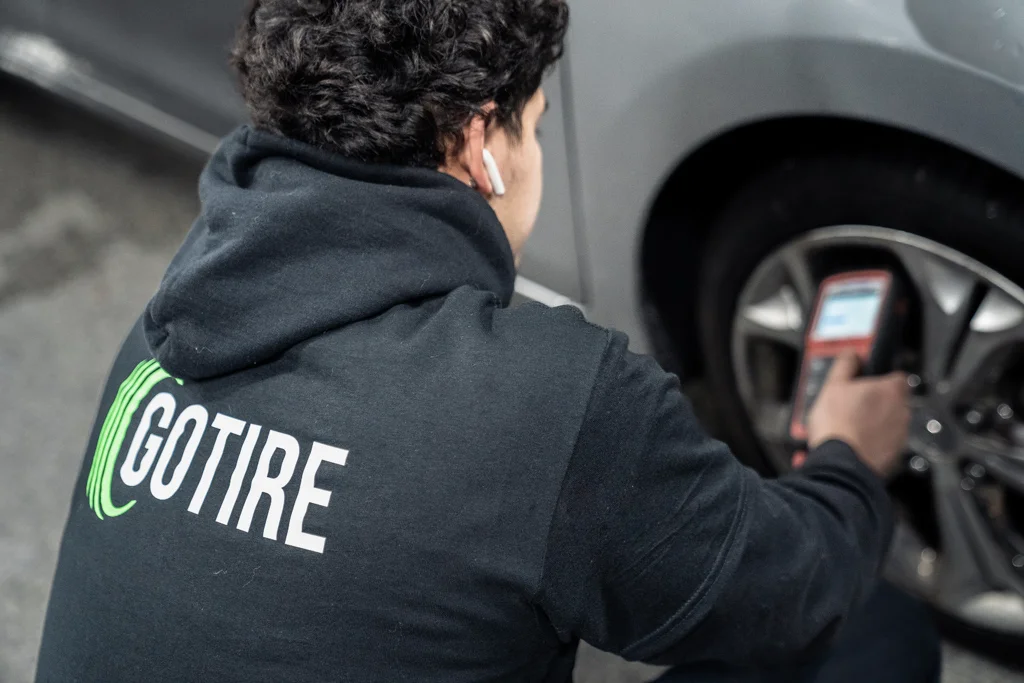
Leaks
Your TPMS sensors will also alert you if there is a leak in one or more of your four tires. If you’ve recently filled your tires to the recommended pressure, but the TPMS light has come on, it might be because of a leak.
If this happens, try waiting about 10 minutes and then check your tire pressure with a tire gauge. If the tire pressure of one or more tires is lower than the others, it could be because of a leak. In this case, put on the spare tire and bring your car immediately to a local mechanic or tire center.
Don’t let the best tire deals & tips roll by!
Sign up for our newsletter
Where and how to fix your tire pressure
Luckily adjusting your tire pressure is cheap and easy enough to do yourself. If your tires are overinflated, you need to let some air out. You can do this by simply screwing off the cap from the tire valve and pressing down on the core, which looks like a small button inside the valve. This will allow air to escape. Make sure to have your tire gauge handy and check to ensure you haven’t let too much air out.

More than likely, your tire pressure light will turn on because your tire pressure is too low. Almost any gas station will have an air pump that you can use free of charge or for a few quarters.
You can check a few places to see the correct tire pressure for your vehicle: in the car owner’s manual, on the sticker on the driver’s door, or on the fuel hatch. You can enter this number into the tire pump, and it will automatically detect when the tire has inflated to the recommended pressure. Simply screw off the tire valve cap, and put the air pump nozzle over the tire valve. The air pump should do the rest, and it will beep when it is done.

TPMS warning light still won’t turn off
- So you’ve done everything you need to, but the tire pressure light is still on. This could be for a variety of reasons but the simplest is that the tire pressure monitoring system hasn’t had time to reset yet. Try going out for a drive, at least 10-15 minutes, and see if it hasn’t turned off the next time you get in the car.
- If the TPMS light still hasn’t turned off, this could mean that there is a small leak in one of the tires. Try checking the pressure with a tire gauge, wait around 10 minutes, and then check again. This is usually enough to reset the warning light.
- If all else fails, then you may need to reset your TPMS manually. Do this by turning your key to the “on” position but don’t start the engine. Then you will need to push and hold the TPMS reset button, usually located on the side or under the steering wheel. The TPMS light will blink three times and then release the button. After that, start the car and let it run for about 20 minutes. This should manually reset the tire pressure light.
What Does It Mean if the TPMS Light Flashes?
If you notice your tire pressure light flashing, this is an indication that something is wrong with the TPMS system itself, usually a faulty sensor or a dead battery. Each wheel has its own sensor, and it could be a problem with one or all of them. Each TPMS sensor also has its own dedicated battery, and one or more of those could be out as well. Either way, if you see your TPMS light flashing, it’s time to bring it in and have a technician take a look at it.
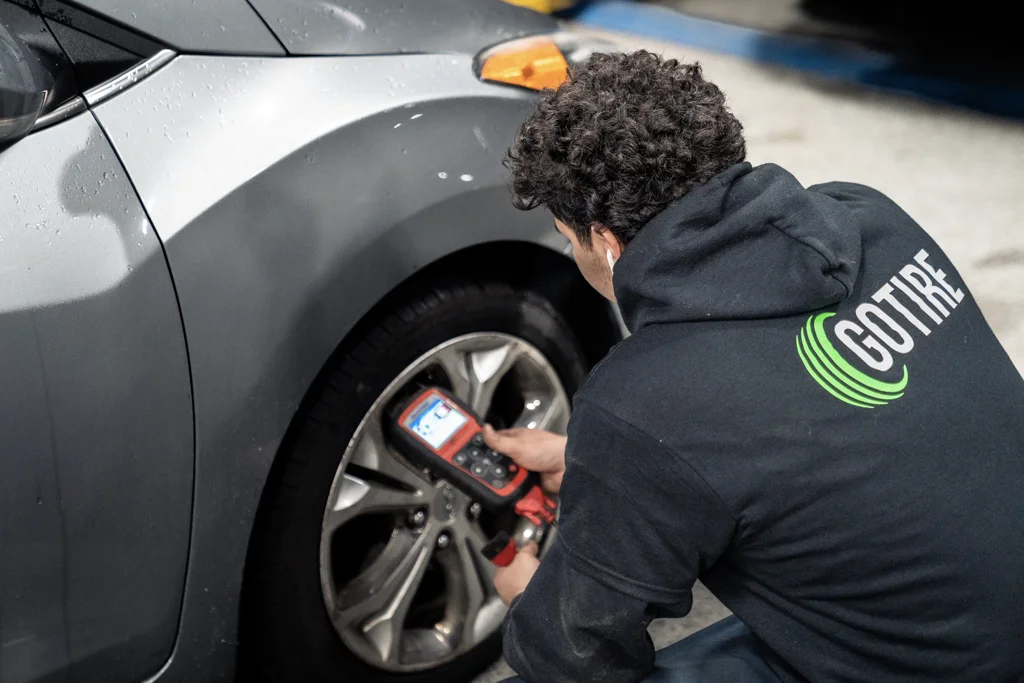
Frequently Asked Questions
Do all cars have a TPMS system?
All US-manufactured cars and light trucks since 2007 come equipped with TPMS. Even before 2007, many higher-end vehicles had TPMS options as well.
How long can I drive with my TPMS light on before it’s a problem?
It depends. But without knowing all of the factors, it’s best to stop your vehicle in at the earliest possible sign. One or more tires might leak, leading to a flat or a blowout within minutes.
Where is the TPMS warning light?
You can find the tire pressure light on your dashboard. It looks like a small cross-section of a tire with an exclamation point inside. In some cars, it also has the word TPMS written underneath it.


